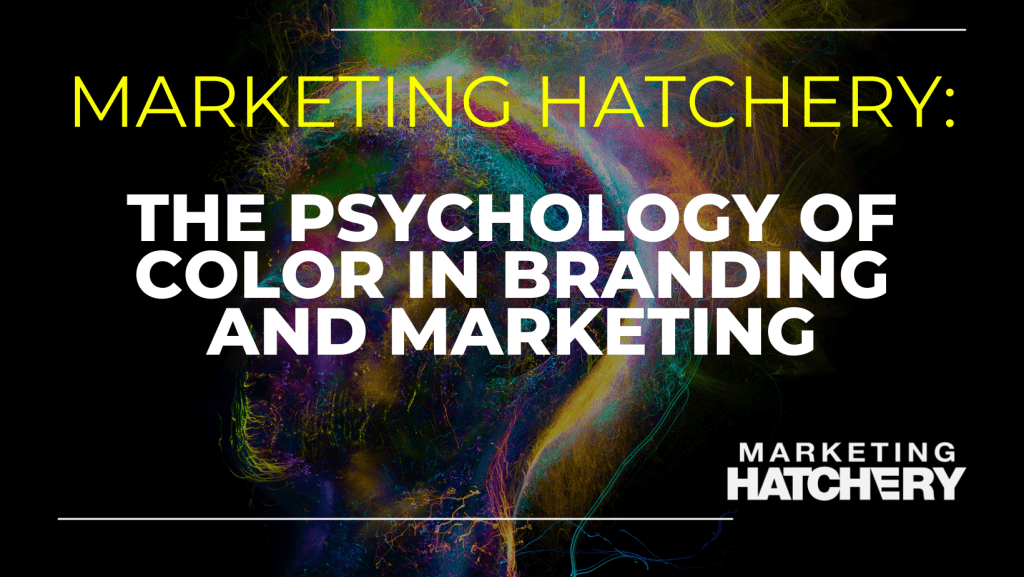
Welcome to the vibrant world of color psychology in branding and marketing. Colors are more than just visual stimuli; they have the power to influence emotions, perceptions, and behaviors. For businesses, strategically using colors can enhance brand recognition, evoke desired emotional responses, and ultimately drive consumer actions. At Marketing Hatchery, we understand the profound impact of color and are here to help you harness its potential to elevate your brand. Call us at 615-208-5373 or visit our website to learn more.
What Is Color Psychology?
Color psychology studies how different colors affect human behavior and emotions. Each color, hue, and tone can trigger specific psychological responses, which marketers can leverage to shape consumer perceptions and decisions. Understanding these associations is essential for creating effective marketing materials that resonate with your target audience.
The Impact of Color in Marketing
Color plays a pivotal role in how consumers perceive and interact with brands. Here are some compelling statistics that highlight the significance of color in marketing:
– Up to 90% of an initial impression is based on color alone.
– Color can increase brand recognition by 80%.
– 93% of consumers make purchasing decisions based on visual factors.
With such a significant impact, choosing the right colors for your branding and marketing materials is crucial. Let’s explore how different colors can influence consumer behavior and how you can use them strategically.
Color Breakdowns and Their Psychological Effects
Red
Red is a powerful color associated with excitement, energy, and urgency. It’s often used in call-to-action buttons to encourage immediate responses from consumers. Brands like Coca-Cola utilize red to evoke passion and stimulate appetite. However, red can also symbolize danger and aggression, so it should be used in contexts where its intensity is appropriate.
Orange
Orange is a vibrant and energetic color that conveys confidence, creativity, and enthusiasm. It’s perfect for brands that want to appear friendly and adventurous, such as Nickelodeon with its playful and imaginative branding. On the downside, orange can also evoke feelings of frustration or immaturity, so it’s essential to use it thoughtfully.
Yellow
Yellow is the color of happiness, optimism, and creativity. It’s bright and attention-grabbing, often used by brands like McDonald’s to create a cheerful and welcoming atmosphere. However, yellow can also cause anxiety and is associated with caution, so it’s important to balance its use to avoid negative connotations.
Green
Green is synonymous with nature, health, and tranquility. It evokes feelings of relaxation and renewal, making it a popular choice for brands in the health and wellness sectors, like Whole Foods. Green can also represent prosperity and growth. However, it can sometimes be perceived as stagnant or bland if not paired with complementary colors.
Blue
Blue is often associated with trust, security, and stability. It’s no surprise that 33% of top brands use blue in their logos, including tech giants like Facebook and Twitter. Blue evokes feelings of calmness and reliability, making it an ideal choice for brands that want to appear dependable and trustworthy. However, blue can also suppress appetite and may feel cold or distant if overused.
Purple
Purple signifies royalty, luxury, and sophistication. Historically, purple dye was expensive and reserved for royalty, which is why it still carries connotations of wealth and exclusivity. Brands like Hallmark use purple to appeal to their predominantly female audience and to differentiate themselves with a unique and elegant brand identity. However, excessive use of purple can come across as overly decadent or moody.
Pink
Pink is often associated with femininity, youthfulness, and imagination. Brands like Barbie and T-Mobile use pink to appeal to their target audiences and to stand out with a distinctive and playful brand identity. However, pink can also be perceived as childish or overly rebellious if not balanced with other colors.
Black
Black exudes sophistication, power, and elegance. Luxury brands like Chanel use black to convey a sleek and refined image. It’s a versatile color that can also signify authority and strength. However, black can be seen as oppressive or cold if overused, so it’s best used in moderation or paired with lighter colors for balance.
White
White represents purity, simplicity, and modernity. It’s often used by brands like Apple and Tesla to create a clean and minimalist aesthetic. White can make other colors stand out and evoke a sense of openness and clarity. However, too much white can feel sterile or empty, so it’s crucial to use it in a way that complements the overall design.
Strategic Use of Color in Marketing
To effectively use color in your marketing efforts, consider the following strategies:
- Understand Your Audience: Different colors resonate with different demographics. Research your target audience to understand their color preferences and cultural associations with colors.
- Align with Brand Values: Choose colors that reflect your brand’s personality and values. For example, a brand promoting eco-friendly products might use green to emphasize its connection to nature.
- Create Contrast: Use contrasting colors to make important elements stand out. For instance, a red call-to-action button on a white background can draw attention and encourage clicks.
- Test and Optimize: Conduct A/B testing to see how different color schemes perform with your audience. Use the data to refine your color strategy for maximum impact.
- Maintain Consistency: Ensure your color choices are consistent across all marketing channels, from your website to social media profiles. Consistency helps reinforce brand recognition and trust.
Harness the Power of Color with Marketing Hatchery
The psychology of color is a powerful tool in branding and marketing. By understanding how different colors influence consumer behavior, you can create compelling marketing materials that resonate with your audience and drive results. At Marketing Hatchery, we specialize in helping businesses like yours unlock the full potential of color in their branding efforts.
Ready to transform your brand with the strategic use of color? Contact Marketing Hatchery today at 615-208-5373 or visit our website. Let’s create a vibrant and memorable brand identity that stands out in the market!



